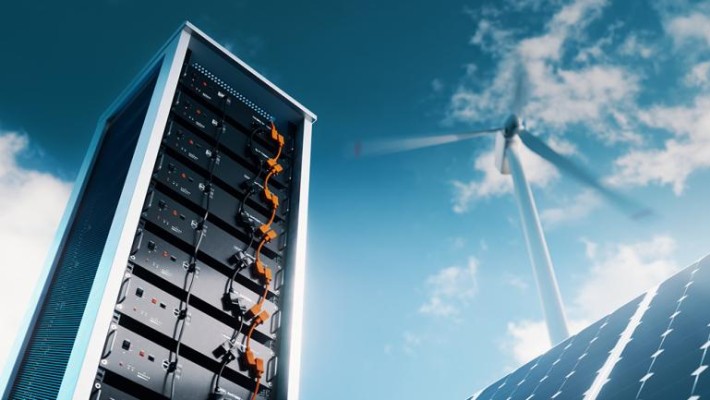Freight Forwarder Insights
Huin International Logistics Latest Articles
Advantages and Disadvantages of Energy Storage Using Batteries
The era for significant advancements in industrial-scale energy storage has arrived, driven by the global transition to renewable energies which are steadily supplanting fossil fuels. Among the various energy storage options, batteries play a crucial role.
Composite image of windmill, solar panel, and battery
A persistent issue with renewable sources like wind and solar power is their intermittent nature; they can generate excess electricity when conditions are favorable—such as sunny or windy periods—but may lead to shortages when these conditions subside. Experts suggest that the key to addressing this intermittency is to store surplus energy for periods of high demand.
Several technologies are available for storing renewable energy, with "pumped hydro" being a notable method. This technique, which comprises over 90% of the world's current high-capacity energy storage, involves using surplus electricity to pump water into elevated reservoirs. During peak energy demand, this water is released through turbines to generate electrical power. While pumped hydro effectively manages voltage levels and maintains grid quality, it presents several limitations, including high costs and specific geographical requirements. Future energy storage solutions need to be more flexible in location and scalable to meet global net-zero targets.
IEC Standards enhance hydro project performance
The International Electrotechnical Commission (IEC) has developed multiple standards to ensure the safety and efficiency of hydro projects. IEC Technical Committee 4, for instance, sets standards for hydraulic turbines and related equipment. Meanwhile, IEC TC 57 publishes core smart grid standards, including IEC 61850, which facilitates the integration and automation of hydro power within digital electrical networks.
Advances in Li-ion battery technology
Lithium-ion (li-ion) batteries are currently one of the most promising solutions for energy storage. Utilities worldwide have increasingly adopted large-scale li-ion battery systems, capable of storing between 100 to 800 megawatts (MW) of energy. California’s Moss Landing facility, for example, boasts a capacity of 750 MW/3,000 MWh, making it one of the largest in the world.
The cost of li-ion batteries has significantly declined in recent years, partly due to innovations driven by the automotive sector’s push for more efficient and affordable electric vehicle batteries. Li-ion cells, standardized by IEC TC 21 through the IEC 62660 series, generate about 3.6 volts (V) per cell. This is higher than traditional battery chemistries, necessitating fewer cells for many applications. IEC standards, such as IEC 61427-1 and IEC 61427-2, facilitate consistent performance characterization for both off-grid and on-grid renewable energy storage systems.
Addressing safety and recycling concerns
Despite their advantages, li-ion batteries have well-known drawbacks, including performance degradation over time and challenges related to recycling and sourcing of critical materials like lithium and cobalt. Cobalt mining, often marred by ethical concerns such as child labor in the Democratic Republic of Congo, highlights the urgent need for sustainable practices. The reliability and safety of li-ion batteries also come into question, evidenced by several incidents of thermal runaway leading to fires in South Korean storage facilities.
IEC TC 120 has been proactive in addressing these concerns with standards that encompass the utilization of recycled batteries and safety protocols. The newly published IEC 62933-4-4 standard, for example, sets requirements to mitigate environmental impact from reused batteries.
Emerging battery technologies
Beyond li-ion, solid-state batteries (SSBs) represent a promising frontier in next-generation energy storage. These batteries replace flammable liquid electrolytes with solid-state electrolytes, offering enhanced safety and allowing for innovative material combinations in battery design. Although full-scale SSBs are not yet market-ready, hybrid versions containing small amounts of gel or liquid may serve as an intermediary solution, presenting a viable pathway for the short-term future.
SSBs face challenges, including high initial costs and the need to establish a clear value proposition to gain market acceptance, according to consultancy IDTechEx. Nevertheless, the development of standardized criteria for these emerging technologies will be essential as they approach commercial viability.
Conclusion
The quest for the next generation of batteries is intensifying, driven by the urgent need for efficient and scalable energy storage solutions. While li-ion batteries currently lead the field, new technologies like SSBs are on the horizon, promising safer and more versatile options. Together with continued advancement in standards set by bodies like the IEC, these innovations will play a critical role in facilitating the global energy transition.
